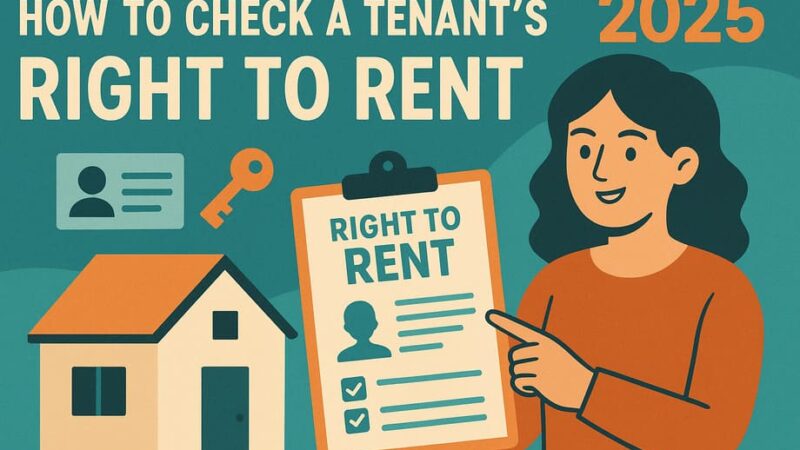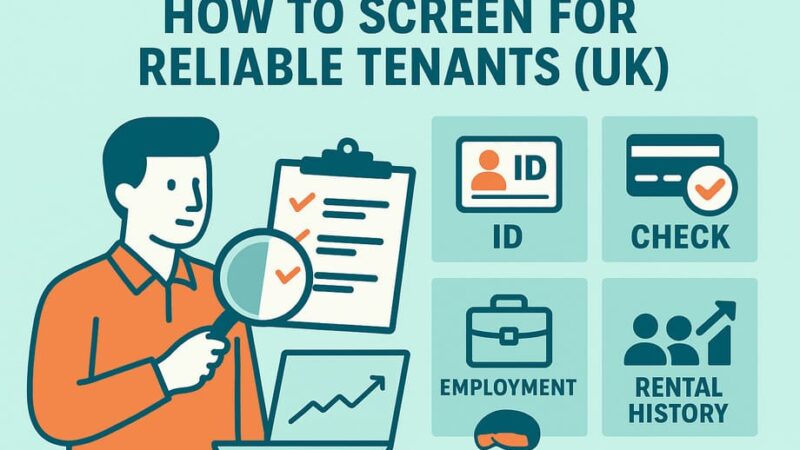Selling a Tenanted Buy-to-Let Property – Complete UK Landlord Guide 2025

Deciding to sell your buy-to-let property is a significant financial decision that requires careful planning and consideration. Whether you’re looking to exit the rental market entirely, diversify your investment portfolio, or simply capitalize on property gains, selling a tenanted buy-to-let property presents unique challenges and opportunities that differ from selling a vacant property.
With changing tax regulations, rising mortgage rates, and evolving tenant rights, many landlords are reassessing their property investments in 2025. This comprehensive guide will walk you through everything you need to know about selling your tenanted buy-to-let property, from initial planning to final completion.
Understanding Your Options: Tenanted vs Vacant Sale
Selling with Tenants in Situ
Selling your property with existing tenants offers several distinct advantages that many landlords overlook. You can continue receiving rental income right up until completion day, avoiding the costs associated with vacant properties such as council tax, utility bills, and building insurance adjustments.
Key benefits of selling tenanted:
- Maintained rental income throughout the sale process
- No void periods or associated costs
- Attracts serious property investors who understand the market
- Faster completion times as investment buyers are typically more decisive
- Established rental history provides proof of income potential
However, selling with tenants also presents challenges. Your buyer pool becomes limited to property investors, which may affect the final sale price. Additionally, coordinating viewings around tenant schedules requires careful management and clear communication.
Selling with Vacant Possession
Vacant possession opens your property to the wider market, including owner-occupiers who may be willing to pay premium prices for their dream home. This broader appeal can potentially increase your sale price, particularly in residential areas where families are actively searching.
Benefits of vacant sale:
- Access to both investment and residential buyers
- Potentially higher sale prices in residential markets
- Easier viewing arrangements and property presentation
- Opportunity to carry out improvements or staging
The downside includes immediate loss of rental income, responsibility for all property costs, and potential delays if tenants don’t vacate as planned.
Legal Requirements and Tenant Rights
Understanding Tenancy Agreements
Your tenancy agreement governs what you can and cannot do during the sale process. Most modern assured shorthold tenancies include clauses allowing property viewings during the final month of the tenancy, but you cannot assume automatic access throughout the entire tenancy period.
Key legal considerations:
- Tenant’s right to quiet enjoyment of the property
- Minimum notice periods for viewings (typically 24 hours)
- Restrictions on access during certain hours
- Requirement for reasonable viewing schedules
Notice Requirements and Timing
If you decide to sell with vacant possession, you’ll need to serve appropriate notice to your tenants. Section 21 notices require two months’ notice and can only be served after the first four months of the tenancy. However, with ongoing government discussions about abolishing Section 21 notices, it’s crucial to stay informed about current legislation.
For periodic tenancies, you typically need to give notice equivalent to the rental period (monthly tenancies require one month’s notice), while fixed-term tenancies run until their natural end date unless there’s a break clause.
Financial Considerations and Tax Implications
Capital Gains Tax Planning
One of the most significant costs of selling a buy-to-let property is capital gains tax, which can substantially impact your net proceeds. For 2025, CGT rates on residential property are 18% for basic rate taxpayers and 24% for higher and additional rate taxpayers, applied to gains exceeding the annual allowance of £3,000.
Strategies to minimize CGT:
- Time your sale to utilize multiple years’ allowances
- Offset qualifying expenses including purchase costs, improvement works, and selling costs
- Consider transferring ownership to a spouse in a lower tax bracket
- Explore principal private residence relief if you’ve lived in the property
Mortgage Considerations
Early repayment charges can significantly affect your sale timeline and net proceeds. Many buy-to-let mortgages include penalties of 2-5% for early repayment, particularly during the initial years of the loan.
Calculate whether waiting until your fixed rate expires would save more in penalties than you’d lose in holding costs. Consider the current rental income, property management costs, and potential market movements when making this decision.
Hidden Costs of Selling
Beyond the obvious estate agent and legal fees, selling a tenanted property involves additional costs that can catch landlords off-guard:
- Deposit transfer arrangements and administrative costs
- Professional inventory updates if selling furnished
- Outstanding maintenance or repair issues
- Utility final readings and account closures
- Insurance policy amendments or cancellations
Preparing Your Property for Sale
Documentation Requirements
Investment property buyers expect comprehensive documentation proving the property’s legal compliance and financial performance. Prepare a complete file including:
Essential documents:
- Current tenancy agreement with all addendums
- Rent schedules and payment history
- Gas and electrical safety certificates
- Energy Performance Certificate (EPC)
- Right to rent documentation
- Deposit protection scheme details
- Any served notices or legal correspondence
Property Condition Assessment
Even tenanted properties benefit from professional presentation. Consider minor improvements that add value without major disruption to tenants:
- Fresh exterior paint and garden maintenance
- Minor repairs to enhance kerb appeal
- Professional photography highlighting investment potential
- Updated fixtures in common areas if applicable
Working with Tenants During the Sale
Communication Strategies
Maintaining positive tenant relationships throughout the sale process is crucial for success. Early, honest communication prevents misunderstandings and encourages cooperation during viewings.
Best practices for tenant communication:
- Explain the sale process and timeline clearly
- Provide adequate notice for all viewings
- Respect tenant schedules and preferences
- Offer incentives for cooperation if appropriate
- Keep tenants informed about progress and any delays
Offering First Refusal to Tenants
Consider offering your property to existing tenants before marketing it widely. Long-term tenants often appreciate the opportunity to purchase their home, and private sales can save on estate agent fees while ensuring a smooth transition.
Tenant purchases typically complete faster than open market sales, and you’ll avoid the uncertainty of external buyers’ mortgage applications or chain complications.
Choosing the Right Sale Method
Estate Agent Selection
Not all estate agents understand investment property sales effectively. Choose agents with proven experience in buy-to-let sales who understand investor requirements and can accurately value tenanted properties.
Questions to ask potential agents:
- What percentage of their sales are investment properties?
- Do they have a database of investor clients?
- Can they provide recent comparable sales of tenanted properties?
- How do they handle tenant liaison during viewings?
Alternative Sale Methods
Property Auctions: Particularly effective for tenanted properties as they attract serious investors with ready funds. Auctions provide certainty of sale date and quick completion, though prices may be lower than private sales.
Direct Investor Sales: Specialist companies purchase tenanted properties directly, offering quick completion and guaranteed sales. While prices may be below market value, they eliminate uncertainty and reduce time to completion.
Online Property Platforms: Modern platforms connect landlords directly with investors, potentially reducing fees while maintaining competitive pricing.
Timing Your Sale Strategically
Market Conditions
The buy-to-let market experiences seasonal variations, with autumn traditionally showing increased investor activity as they prepare for the new tax year. However, local factors often outweigh seasonal trends.
Monitor rental yields in your area, as higher yields attract more investor interest and can support property values. Areas with strong rental demand often see sustained investor activity regardless of broader market conditions.
Personal Circumstances
Consider your personal tax position when timing the sale. If you’re approaching retirement or expecting reduced income, selling in a lower tax year could significantly reduce your CGT liability.
Also consider the timing of any other property transactions, as these might affect your overall tax position and available reliefs.
Maximizing Your Sale Price
Understanding Investor Motivations
Investment buyers evaluate properties differently from residential purchasers. They focus on rental yields, management requirements, and growth potential rather than emotional factors.
Key investor considerations:
- Current rental income and potential for increases
- Property condition and maintenance requirements
- Local rental market strength and demand
- Ease of management and tenant quality
- Potential for capital appreciation
Presenting Investment Data
Prepare comprehensive financial information showing the property’s investment performance:
- Annual rental income statements
- Operating expense summaries
- Yield calculations and comparisons
- Local rental market analysis
- Future rental growth projections
Common Pitfalls to Avoid
Inadequate Preparation
Rushing to market without proper preparation often results in reduced sale prices and extended marketing periods. Invest time in assembling documentation, addressing maintenance issues, and understanding your local market.
Ignoring Tenant Relations
Poor tenant relationships can sabotage your sale through non-cooperation with viewings, property damage, or negative feedback to potential buyers. Maintain professional, respectful communication throughout the process.
Unrealistic Pricing
Overpricing tenanted properties is a common mistake. Investment buyers are typically well-informed about market values and rental yields. Price realistically based on recent comparable sales and current market conditions.
The Completion Process
Transfer of Responsibilities
Selling a tenanted property requires careful coordination of various transfers:
Essential transfers:
- Tenancy agreement assignment to new owner
- Deposit transfer to new landlord
- Utility account transfers and final readings
- Insurance policy arrangements
- Outstanding maintenance responsibilities
Final Preparations
Ensure all documentation is current and accessible for completion day. Provide the buyer with emergency contact procedures and any ongoing maintenance schedules or warranty information.
Post-Sale Considerations
Reinvestment Opportunities
Consider your options for the sale proceeds, whether reinvesting in property, diversifying into other assets, or using funds for personal needs. The buy-to-let market continues evolving, and future opportunities may differ from current conditions.
Tax Reporting
Ensure proper reporting of capital gains and any other tax implications from the sale. Consider professional tax advice to optimize your position and understand any ongoing obligations.
Conclusion
Selling a tenanted buy-to-let property requires careful planning, clear communication, and realistic expectations about the process and outcomes. While the decision to sell represents the end of one investment journey, proper handling of the sale process ensures you maximize your returns and maintain positive relationships with all parties involved.
Whether you choose to sell with tenants in situ or wait for vacant possession, success depends on thorough preparation, professional guidance, and realistic pricing. The investment property market continues offering opportunities for well-informed buyers and sellers who understand the unique dynamics of tenanted property transactions.
Take time to evaluate your options carefully, seek professional advice where needed, and approach the sale process with patience and professionalism. With proper planning and execution, selling your tenanted buy-to-let property can be a smooth and profitable conclusion to your investment journey.
Remember that property investment and taxation rules can change, and individual circumstances vary significantly. Always seek professional advice from qualified estate agents, solicitors, and tax advisors before making important decisions about your property investments.
Last Updated on July 21, 2025 by James Cartwright







